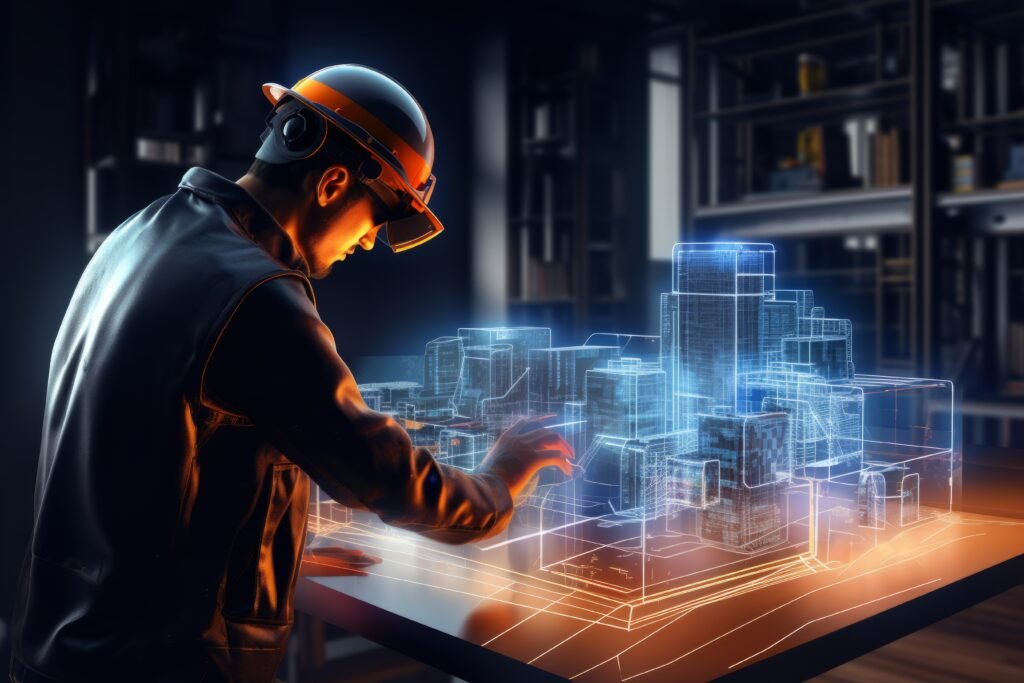Introduction
Construction technology has changed the game, bringing forth new ideas and changing how structures are planned, built, and kept up. This discipline deals with problems including cost control, efficiency, and sustainability by using cutting-edge technologies, materials, and software. Let’s look at 10 important changes that are happening in building technology and how they will affect the future.
The Evolution of Construction Technology
In the last 10 years, building technology has evolved a lot. We used to build things by hand using basic tools and a lot of hard effort. We employ the latest equipment and software to aid us every step of the way. This boost has made projects more precise, cut down on errors caused by humans, and enhanced processes.
Building Innovation Through Smart Materials
Smart materials are at the forefront of new ideas for construction. For example, self-healing concrete has small living creatures in it that fix fractures over time. This makes constructions last longer. Thermochromic glass also changes how clear it is dependent on the temperature, which helps buildings save energy.
Digital Construction with Building Information Modeling (BIM)
Digital construction has come a long way since BIM came out. Architects, engineers, and contractors may use this smart 3D modeling software to plan, assess, and execute projects together. BIM makes projects less risky, helps keep costs down, and speeds up the time it takes to build.
The Role of Drones in Digital Construction
Demy drones have changed digital construction by giving us overhead views of sites, recording progress updates, and doing surveys with unmatched accuracy. Drones are increasingly more than just tools for watching; they are also important for checking infrastructure for damage, which saves time and money in constructing innovation.
3D Printing for Construction Technology Advancements
3D printing has sped up construction technologies by making it feasible to make building parts one layer at a time with very little waste. This technology is very helpful for making unique designs, experimental buildings, and even whole houses in a very short amount of time.
Artificial Intelligence and Machine Learning in Digital Construction
A new age in digital building is beginning with AI and machine learning. These technologies look at a lot of data to figure out what problems could come up, make the best use of resources, and make sites safer. AI-powered technologies are helping with anything from figuring out risks to making plans.
Sustainable Building Practices with Technology
Technology is making this change happen, and sustainability is becoming the most important thing in building. New ideas, such designs that use less energy, recycling building debris, and employing renewable materials like bamboo, are changing the way projects meet environmental objectives.
Wearable Technology for On-Site Safety
Safety is always a worry in the construction sector, but wearable technology is doing a great job at fixing it. Smart helmets, vests, and goggles with sensors keep an eye on workers’ vital signs, find possible dangers, and transmit alarms to stop accidents from happening.
Construction Robotics Enhancing Productivity
Another important part of producing technology is robotics. Robots that produce bricks, robotic arms that weld, and demolition bots are all examples of automated tools that make labor simpler, faster, and more accurate. This new idea lets workers concentrate on more important things.
Conclusion
The building business is changing in amazing ways because of the use of new technology and reasonable procedures. Improvements like wearables, robots, and green materials not only make production and safety better, but they also make the company more environmentally responsible. These innovative technologies are starting a new age in building, combining skill with environmental responsibility.







Leave a Reply